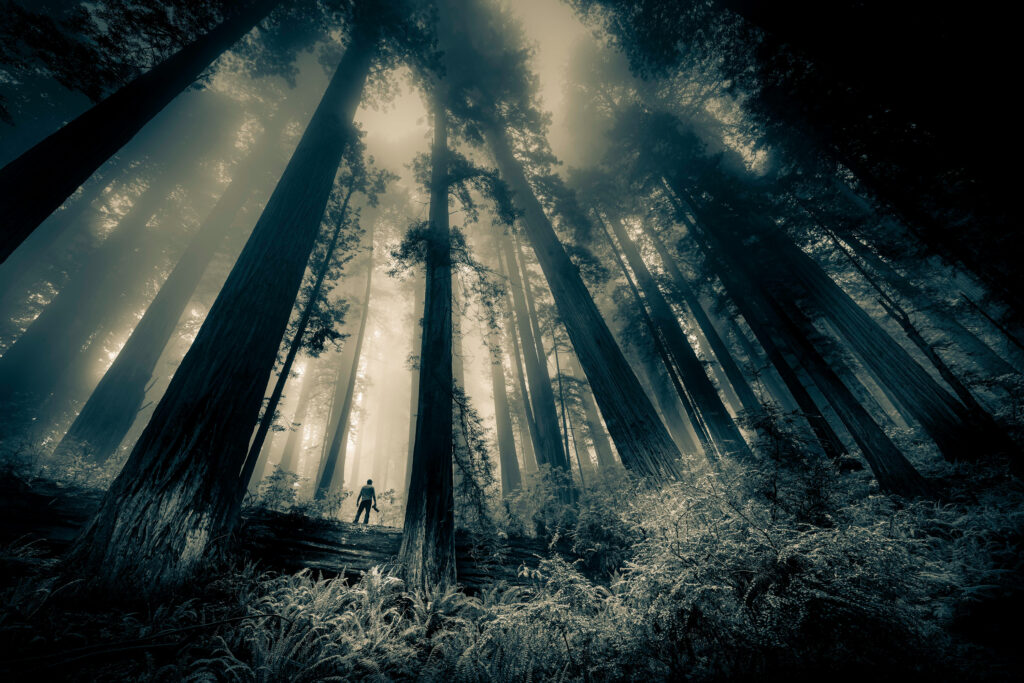
A patch of fog is streaming between the towering Sequoias transforming the overhead sunlight into what landscape photographers call “God rays” and scientists call crepuscular rays.
Its a “hurry up moment” for our group of nature photographers to fine tune compositions, check focus, and trigger their camera’s shutters.
Suddenly, shafts of sunshine connect the forest rooftop with its understory. The fog this day is perfect— just thin enough to add drama mystery and magic.
The photographers peer at the backs of cameras they hold inches above the forest floor.
Many are on their knees, among the sword ferns or lying across a fallen log.

Their ultra wide angle lenses capture a fairytale scene from extreme top to bottom. A prized image is the one with the most interesting foreground object. The feathery woodfern, dew covered epiphytes, banana slugs, pink rhododendrum blooms are bathed in glorious light. The tops of the 2,000 year old red barked giants are marked with bursts of heaven-like whiteness. This moment is rare and to be treasured.
Coastal fog can roll in and out within minutes, or not at all. West facing hillsides within a mile of the frigid cold Pacific are staked out by knowledgable locals—hoping for a sunny morning preceded by days of heavy rains. Finding rainy days along the rugged coast between Crescent City California and Brookings Oregon is not difficult. Happening upon a sunny day is the challenge—and is more likely in late Spring and Summer.
Mosses, lichens and ferns come alive after a good rainstorm. But, any day in a Redwood Forest is a treat. The air breathes easily. Redwoods and Sequoia Forests suck away pollutants and pump out oxygen tinged with a wonderful mild spice-like smell.
And, if you are lucky enough to time the sun and fog, you may witness and capture the elusive “God Rays”.

